The Ebon Isle
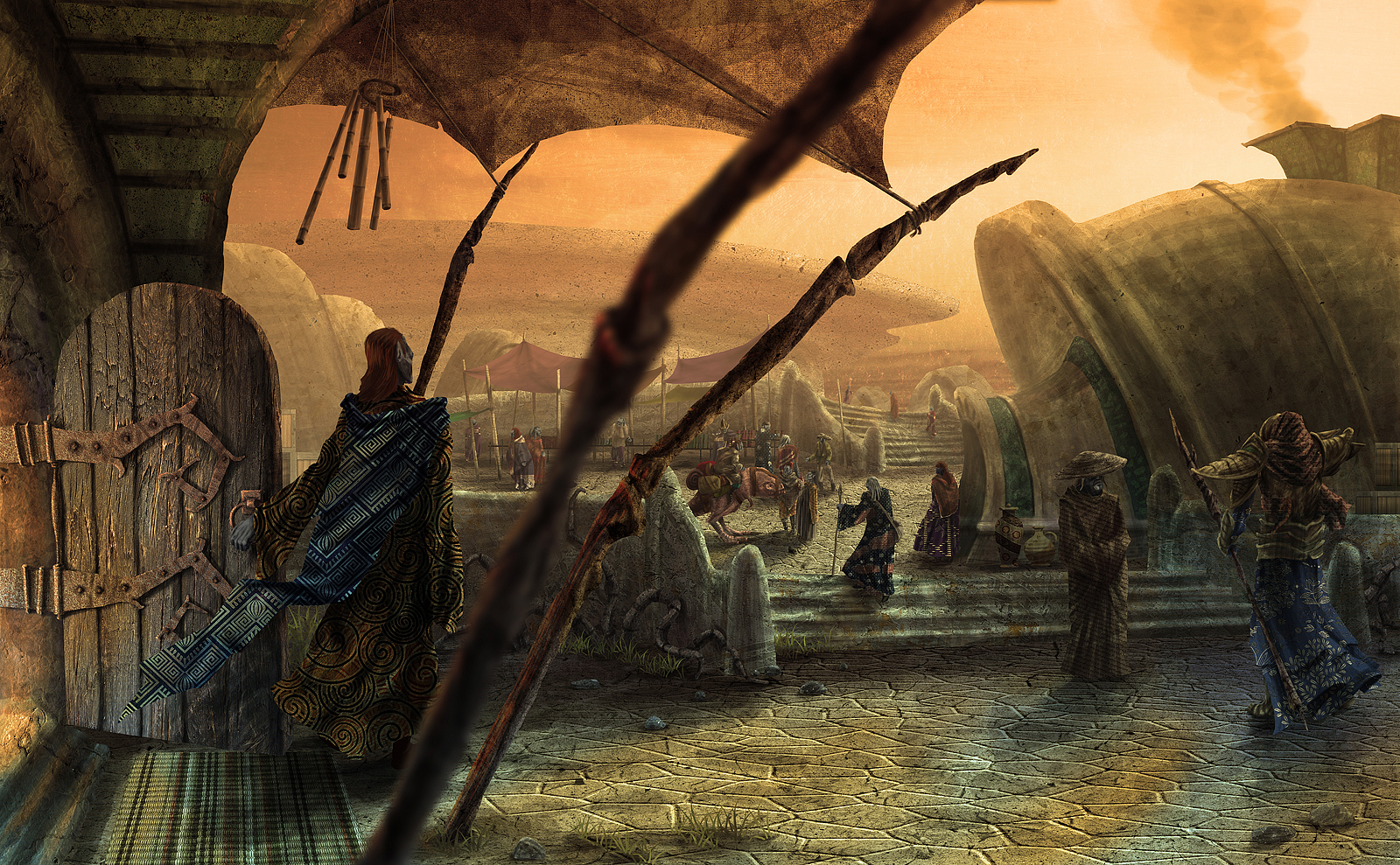
The Ebon Isle
| |
|---|---|
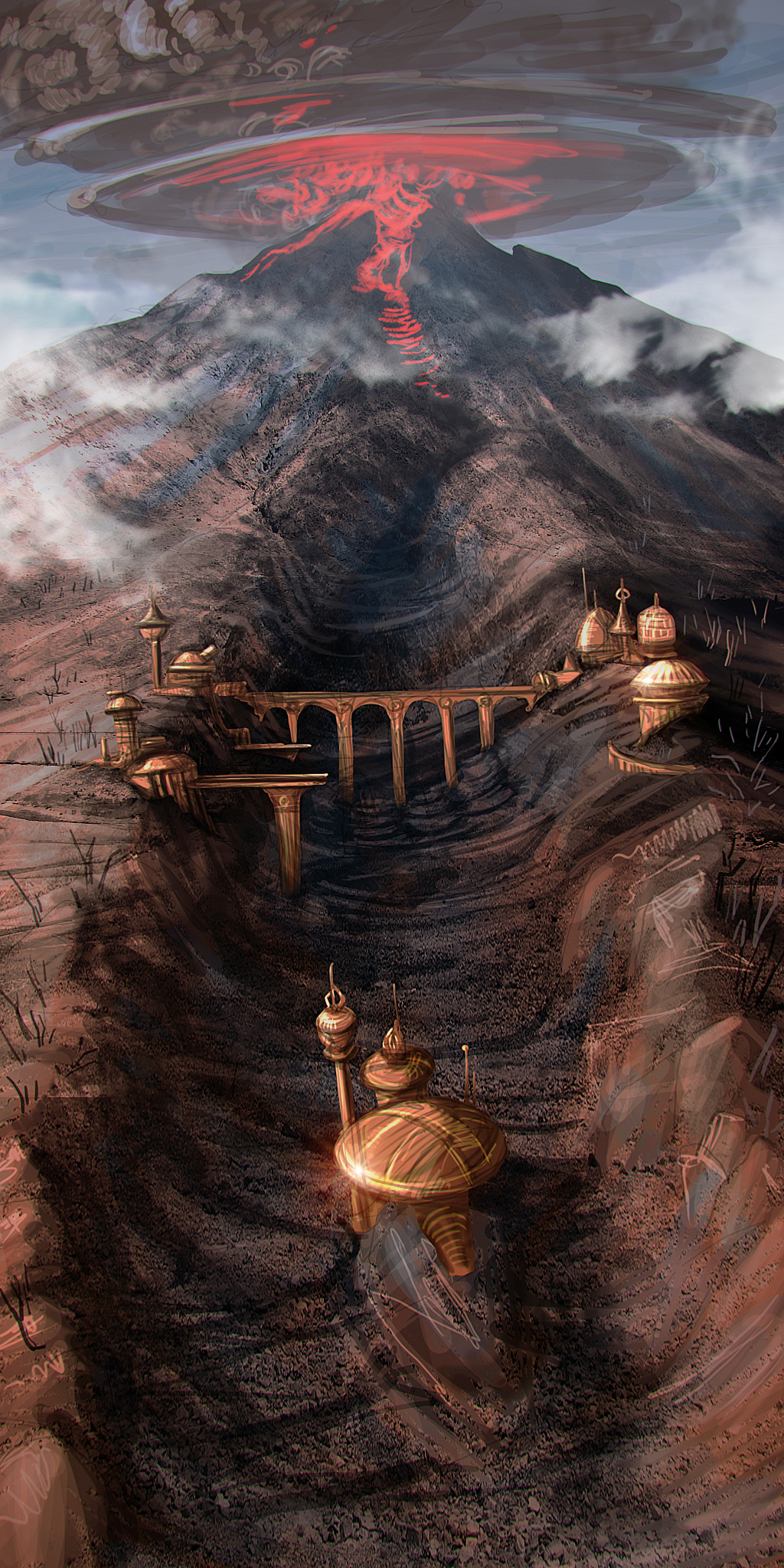
| |
|
Capital | Gloomhold |
|
Largest City | |
|
Languages | Elvish (Ebon Dialect), Uldennic |
|
Government |
Federation of matriarchal clans; theocracy |
|
Land Area |
148,910 sq mi (total)
16,892 sq mi (arable)
|
|
Population |
385,674 |
|
Currency | |
The term "Ebon Isle" refers to an island and a nation; the term is used interchangeably in other languages, though the local language makes a distinction:
- The island of Eponesse (Elvish: "Promised Land")
- The nation of Ashunvall (Elvish: "(Land of the) Dark Sun")
The nation Ashunvall has existed since 31 GC, when it was made independent from the The Undying Kingdom by an act of its queen. Though not part of the official announcement, it is generally assumed that this was done as an appeasement to the Court of the Oath, a way to absolve the realm of the stain of slavery by granting their freed slaves a home of their own.
The grant was not conceptualized by the elven court; rather, it was the object of a growing movement in Oathkeep, fueled by the words of The Prophet, indicating that God had preordained the island as a dark elven refuge. Given the island's limited strategic value to the Undying Kingdom, it was not a crippling cession.
The island, formerly known as Zvardheim, was long a dwarven possession, part of the realm of Nordrek. The elves of the High Forest had made several unsuccessful bids for control, gaining scraps of land here and there, until the eruption of The Godhand, previously not known to be a volcano. The rain of ash transformed the island completely, ending the dwarven civilization and allowing for a rapid elven conquest. There are many, especially among the dwarves of Nordheim, who accuse the elves of causing the eruption.
The Ebon Isle is a land of unique flora and fauna, with a culture unlike anything found in other elven lands, built atop an ancient, lost civilization. As such, it likely holds many secrets yet to be unearthed, and promises many dangers for the daring adventurer.
Geography
The Ebon Isle is a large island located in the Frozen Bay, at and around the 64th parallel. It is east of the dwarven realm of Nordheim and west of the Mageholds. Its capital is 1,735 miles north by northwest from Orendon.
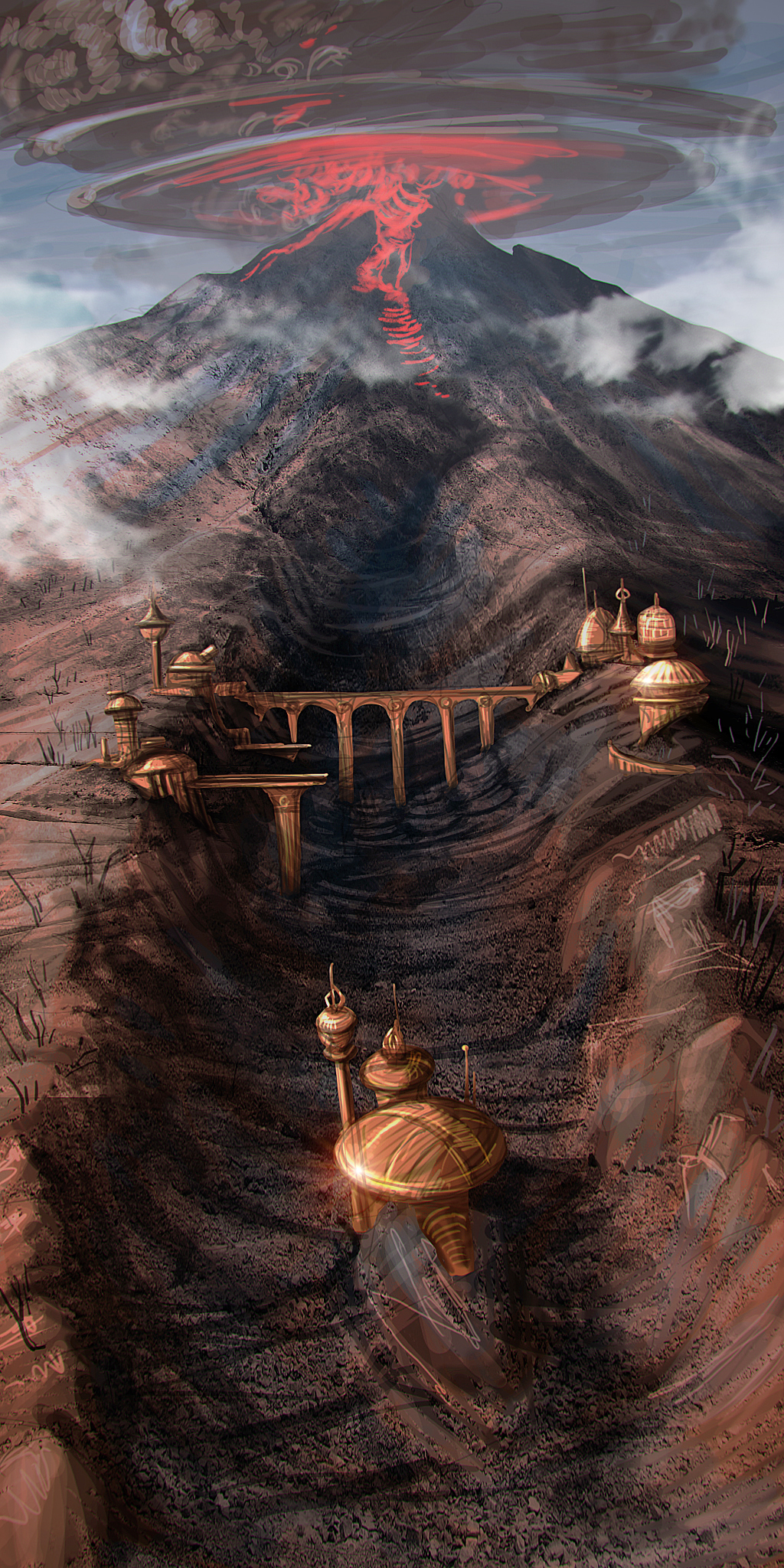
The island is oriented around The Godhand, a mountain at the center of a multi-spired mountain chain. The term can interchangeably refer to the entire range, or to its capstone. Since its eruption, The Godhand has continuously spewed smoke and ash, at varying rates. The outer reaches of the island are rarely affected, receiving only occasional dust storms, though the central highlands are perpetually shaded by black clouds, giving rise to the eponymous "Land of the Dark Sun".
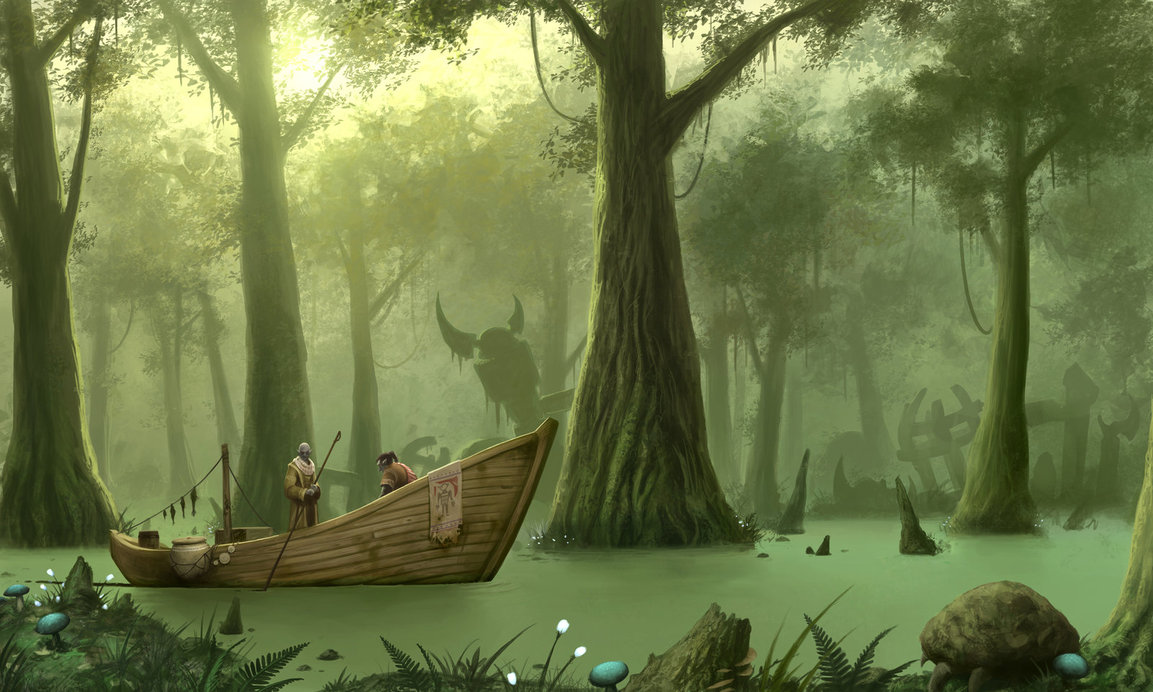
The Veldath, a region of plains and jungles south of the Godhand, is the most fertile land, enriched by volcanic ash, and well watered by the rain patterns created by the ash cloud. Numerous volcanic vents warm the springs and lakes of the southern plains, granting the lands a warmth uncharacteristic of the island's latitude. The eastern and western coasts are less affected by this, and are considerably colder, though moderated by the ocean. The northern coast is exceptionally cold, mostly permafrost and glaciers.
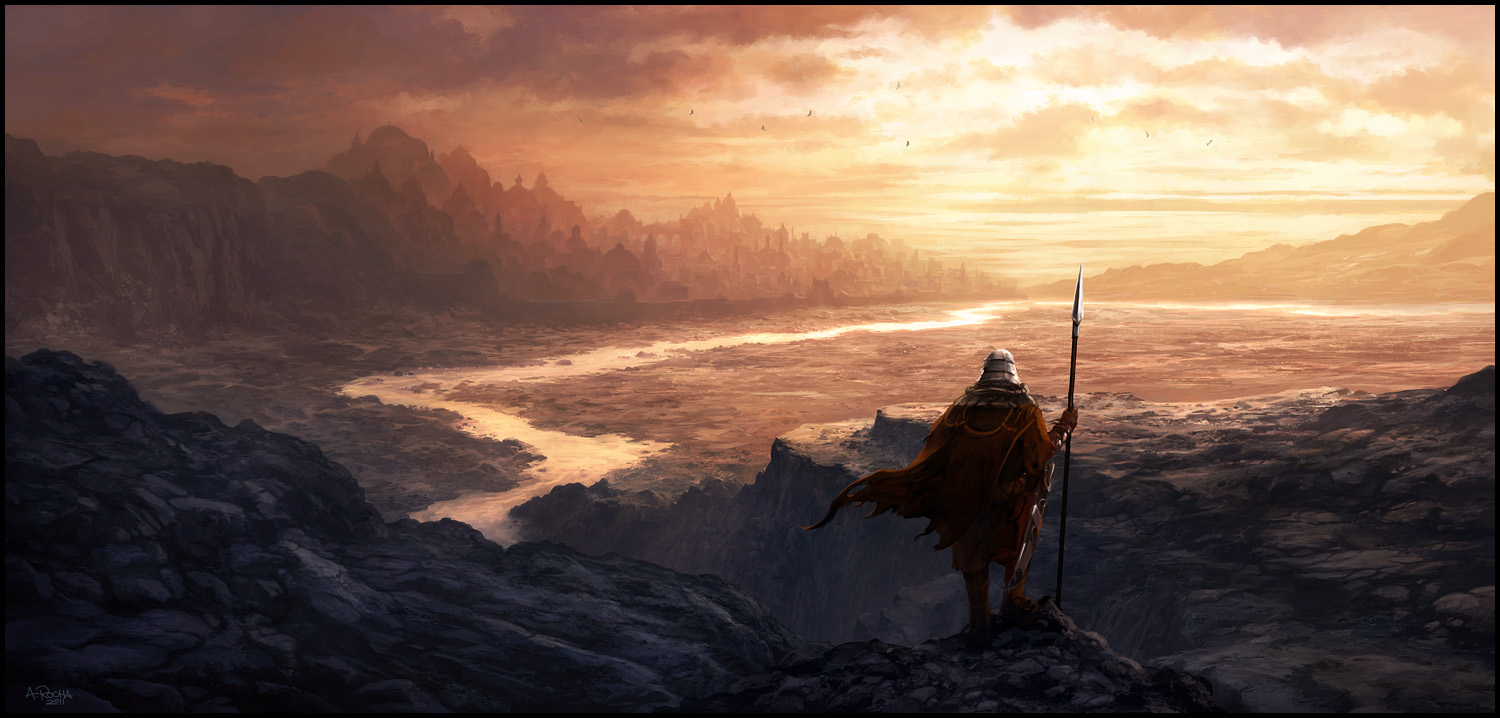
Stretching between the inner highlands surrounding The Godhand and the southern plains are the Ashlands, dominated by a darkened sky and a constant rain of ash. The Ashlands are a tumultuous environment--vents of fresh lava and steaming spouts of water keep a few areas warm, while the rest is bitterly cold, deprived of sunlight and scoured by dust. Despite the harsh environment, a number of species thrive in the Ashlands, including many fungi and other sunless plants, and insects of exceptional size, inured to the cold and the dust.
History
The oldest archaeological evidence of dwarven habitation dates back to the fifth millennium BGC. It is noteworthy that the majority of ancient dwarven ruins on the island have yet to be unearthed, so it is possible some date back much further.
The earliest elven foray into the island was chronicled by VORN doBRAN in 1798 BGC, detailing an encounter, followed by a number of inconclusive skirmishes, the first his people had seen of elves in memory. Many incursions would follow in later generations.
The Godhand erupted in 756 BGC, after which the island was claimed by the Undying Kingdom. They largely developed its fertile southern coast and plains, but built very little elsewhere.
In 31 GC, the island was ceded to the new nation of Ashunvall. Since then, the high elven population has all but evaporated, and the dark elven population has swelled to hundreds of thousands. Nearly all of the island is populated by dark elves at some density; they have learned to adapt to its harshest climates and biomes.
After the End in Fire in 338 GC, many non-dark-elves began to immigrate to the island, reaching a peak after the sacking of Oathkeep in 388. Dark elves still dominate the demographics of the island, but the legacy of this immigration remains, with several non-elf populations thriving in various parts of the island.
Government
The Protectorate
Technically, the island was ceded to the Protectorate of the Ebon Isle, a government largely imagined by the Undying Court. Its tenets and structure were laid out by the elven court, and presented without debate along with the initial cession. Very shortly thereafter, dark elves began streaming to the island, well in advance of the recognition of an independent state by the Court of the Oath. Years later, when the diplomatic matters were finally settled, the nation of Ashunvall was recognized, having organized without the interference of the Undying Kingdom. At first, the elves did not honor this agreement, but the rest of the Court had a quorum, and ratified the island's independence under its own government anyway. After several decades, the Court eventually conceded the point, though never formally recognized the new nation.
The Protectorate was meant to have a Lord Protector, the highest-ranking nobleman (undoubtedly backed by the highest matriarch, the true power behind the throne) of the realm, who was King in all but name. The Undying Queen would be the realm's head of state, though the realm would be entirely self-governed. This created a crucial problem, as the head of state was the formal representative to the Court of the Oath, and would choose her own emissaries. This was done, per the Undying Queen's words, "to preserve the unity of the Elven race, and to reassure the Great Races that Elves are, as ever, unified in body and spirit".
Ashunvall categorically rejected this arrangement. They cast aside the veils of high elven governance, and officially declared that their people shall be comprised of tribes known as "clans", each clan was governed and headed by a Matron, and that there shall be a council of these Matrons who shall sit in judgment of matters of governance affecting the island as a whole, and that they shall choose from among their number a Supreme Matron, who shall represent the nation in foreign matters (both diplomatic and belligerent), and whose choosing shall be a method of their own devising, with no respect to foreign custom.
This arrangement was not a great surprise, as the dark elves had long since organized themselves thus, but it was seen as an affront by the Undying Court, who didn't shut up about it for several decades.
The Grand Assembly
By tradition, each clan has the following governmental structure:
- Matron (She Kha): Supreme executive and principal legislator. State representative to other clans. Commander-in-chief of the clan in wartime.
- High Lord (Dhu Kha): Executor of the Matron's will (chief delegate of powers, to be granted or withdrawn at will). Titular powers include command of the Matron's honor guard, only other person in the clan allowed to cast a vote in the Matron's name to the Grand Council.
- Council of Elders (Ahl ne Syr): A gathering of the eldest female of each family comprising the clan. This body acts as an appelate court to any decision made by the Matron, except in wartime (though her decisions can be questioned when war concludes).
The collective government of the nation, therefore, is a superior government of and by the clans, and has the following structure:
- Supreme Matron (Kha She Kha): Simply, the She Kha of the Supreme Clan.
- Supreme Clan (Kha Senne): The most honored clan among the clans. This position is gained (and lost) through consensus of the Grand Assembly. In practice, this involves a lot of back-room politics and warfare. For centuries, the Supreme Clan has been Senne eiTyre, of which the ruling family is Ryl'Ien.
- High Executor (Kha Dhu Kha): The Dhu Kha of the Supreme Clan. Holds a tie-breaking vote in the Grand Assembly, and serves in title as the Commander-in-Chief of the Grand Army in peacetime and during defensive wars.
- Grand Assembly (Ahl ne Chare): A gathering of clans, each represented technically by its Matron, though generally an emissary is appointed. When official votes are required (such as to declare war, to ratify treaties, etc), only the clan Matron or High Lord may cast the clan's vote; votes not thus cast belong to the Supreme Clan.
- Grand Army (Tyra na Chakh): The armies of the clans, unified under single rule. Traditionally, te Grand Army is only organized to defend the nation from invasion. Increasingly, the Supreme Clan has found clever means to rally the Grand Army for acts of conquest and prestige.
The Church of the Ever-burning Fire
The Church of the One is the most common faith among the people of the Ebon Isle. Their practices and traditions have varied somewhat since the founding of Ashunvall, to the point where they are not considered part of the Orthodoxy. Though they do recognize the Supreme Potentate as the leader of their Church, this is seen as largely symbolic, since they reject the authority of a number of bodies of the Holy See, including the Sisterhood of St. Devorah.
The main difference of opinion centers around the meaning and purpose of the True Flame. To the Orthodoxy, this is seen as a rare and special gift, granted to God's chosen few, in order to combat the forces of evil. Its power is too great for the hands of men, and for anyone with earthly attachments, which is why only the holy and chaste women of the Sisterhood of St. Devorah may wield it.
In contrast, the elves of the Ebon Isle see the True Flame as a concrete manifestation of God's favor, and strongly prefer that their clan matrons possess the gift. Those possessing it are not cloistered, but rather are celebrated in every way, and try to honor their exalted status by doing great works in God's name. Matrons, naturally, are not in any way chaste, nor do they reject earthly power, and this makes them infidels in the eyes of the Sisterhood, though the Holy See specifically labels them Flock Astray, a carefully-chosen label that does not necessitate Holy War to correct their misteps.
In any case, the faithful of the Ebon Isle need a church, so a local church necessarily must exist. The Abbey of the Ever-burning Fire, a temple situated close to the caldera of the Godhand, serves as the central church of this order. The abbess of the temple enjoys the title Bishop of the Godhand (an official dioceses of the Orthodoxy) and the more contraverisal title Keeper of the True Flame, a title also claimed by the Mother Superior of the Sisterhood of St. Devorah.
Given the belligrent tendencies of the dark elves (citation needed), the Bishop of the Godhand tends to be most powerful wielder of the True Flame in the island, rather than a highly-placed Matron. The clergy in general tends to eschew material power, citing no end of precendent in the Metaphrasis.
The Church claims much authority in the island, including the sole authority to declare Infelidity, a point which has become very important of late, as the Supreme Matron is bound by the tenets of her faith to wage holy war upon infidels. Specifically, in the last two centuries, the She Kha of the Supreme Clan has gathered the Grand Army no less than seven times (more than the sum of all other such assemblies in history), due to the essentially automatic authority to do so in matters of Holy War. Her critics have accused her of manipulating the Chuch to declare as infidels whoever she sees fit, thus immediatley justifying offensive warfare. (Citation needed)
Etymology of Terms
During the first few hundred years of Ashunvall, the local dialect underwent some changes, largely the result of a deliberate effort by the government to distance itself from the Undying Kingdom and its people. In particular, all words referring to anything of importance (certainly including official titles) were to be changed to words not used by the elves of the High Forest.
In particular, the Ashenni people searched for a word that adequately described the role of the Matron; she was not merely a female head of household, nor was she a Lady, nor a Queen, but something unlike any title they were as yet familiar with. The answer soon came, as they soon came into contact with the Kurnish people, whose leaders seemed to embody the very concept they hoped to describe. The kahan of each tribe was a supreme executive figure, answerable to a council only in times of peace. This both explained their general predilections, and helped to inform more specific rules for which they badly needed standardization in the early centuries.
This influence is clear in the loanword Kha meaning "chief".